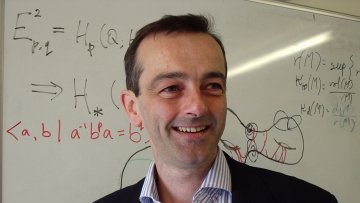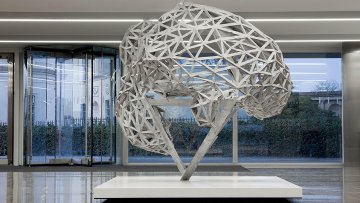Professor Martin Bridson, Whitehead Professor of Mathematics, Vice Chairman of the Mathematical Institute and Fellow of Magdalen College, has been elected to the American Mathematical Society “for contributions to geometric group theory as well as its exposition, and for service to the mathematical community.” In addition to geometric group theory, Martin's
14:15
An Abundance of K3 Fibrations and the Structure of the Landscape
Abstract
Even a cursory inspection of the Hodge plot associated with Calabi-Yau threefolds that are hypersurfaces in toric varieties reveals striking structures. These patterns correspond to webs of elliptic K3 fibrations whose mirror images are also elliptic K3 fibrations. Such manifolds arise from reflexive polytopes that can be cut into two parts along slices corresponding to the K3 fibers. Any two half-polytopes over a given slice can be combined into a reflexive polytope. This fact, together with a remarkable relation on the additivity of Hodge numbers, explains much of the structure of the observed patterns.
Branch groups: groups that look like trees
Abstract
Groups which act on rooted trees, and branch groups in particular, have provided examples of groups with exotic properties for the last three decades. This and their links to other areas of mathematics such as dynamical systems has made them the object of intense research.
One of their more useful properties is that of having a "tree-like" subgroup structure, in several senses.
I shall explain what this means in the talk and give some applications.
As you enter the main entrance lobby of the Andrew Wiles Building you are greeeted by Axiom. Created by artist Mat Chivers, the sculpture is the winner of the Mathematical Institute's Sculpture Competition. The competition invited artists to propose, and eventually create, a substantial and artistically significant sculpture to be placed in the main entrance lobby. We would encourage you all to visit and meanwhile allow Mat to explain the work and its construction.



